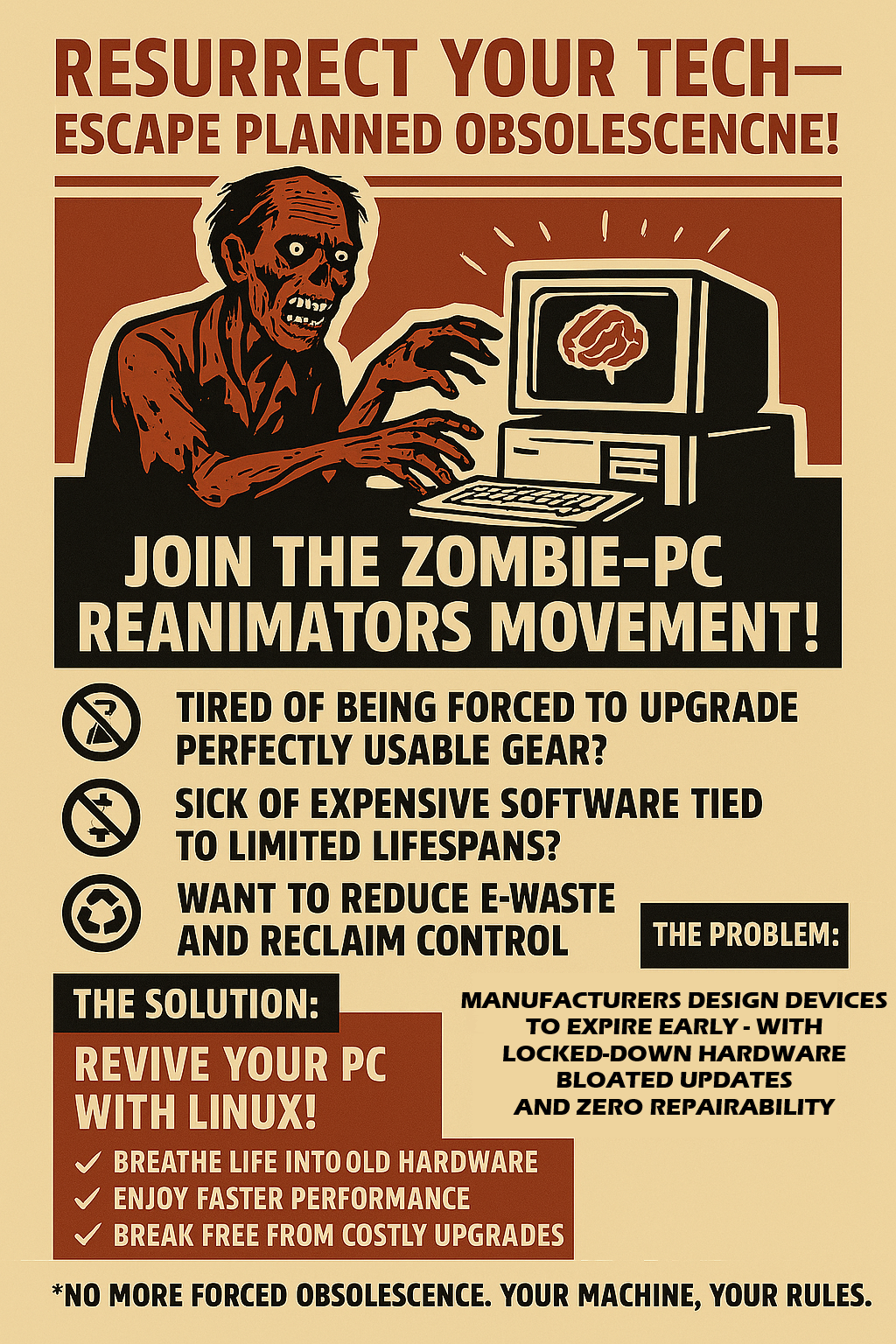The Plan:
Planned obsolescence is a strategy where products are deliberately designed to become outdated or difficult to maintain, pushing consumers to upgrade. Both Apple and Microsoft have been criticized for employing this tactic in various ways. Here’s how it plays out for each:

🍏 Apple: Hardware & Software Lock-In
Apple has faced multiple legal challenges over planned obsolescence, especially in Europe:
- Battery Performance Throttling: Apple admitted to slowing down older iPhones via software updates to “preserve battery life,” but critics saw it as a way to nudge users toward newer models.
- Repair Restrictions: Apple has historically limited access to repair manuals and genuine parts, making DIY or third-party repairs difficult. This was highlighted by France’s repairability index which gave Apple’s iPhones and MacBooks mediocre scores (4.5–7 out of 10).
- Frequent Model Refreshes: Annual releases of new iPhones and MacBooks often come with exclusive features, leaving older models feeling obsolete even if they still function well.
- Legal Action: French regulators have launched investigations into Apple’s practices, with advocacy groups alleging intentional obsolescence.
- MacOS Monterey: Was released October 2021. Monterey will no longer receive security updates from November 2024. Monterey is the oldest working version of MacOS – But is it secure?
- iMac & Macbooks:as old as 12 years often still run well enough, but cannot install a secure browser or other software
🪟 Microsoft: Software-Driven Obsolescence
Microsoft’s approach is more subtle but equally impactful:
- Windows 11 Hardware Requirements: The launch of Windows 11 excluded millions of perfectly functional PCs due to strict CPU and TPM 2.0 requirements. Even some Microsoft Surface devices from just a few years ago didn’t qualify.
- End of Support for Windows 10: Support ends in October 2025, meaning no more security updates for older systems. Microsoft recommends recycling or upgrading, which could lead to up to 240 million PCs becoming e-waste.
- Limited Upgrade Paths: Users with older hardware are often forced to buy new machines or switch to unsupported workarounds, like registry hacks or third-party patching tools.
- Environmental Impact: The forced obsolescence contributes to massive carbon emissions and e-waste, with discarded PCs posing risks due to heavy metals and battery hazards.
- PCs & laptops with processors older than 6 years are generally not supported on Windows 11
- Windows PCs 8 or 9 years old often still run well enough for their user, but are not secure online.
- Linux can also give these older machines new life with an up to date & secure OS
🧠 Why It Matters
Planned obsolescence isn’t just a consumer annoyance—it’s a sustainability issue. It:
- Drives unnecessary consumption
- Increases e-waste and environmental harm
- Undermines repairability and user autonomy
Reanimate – Recycle – Reuse
